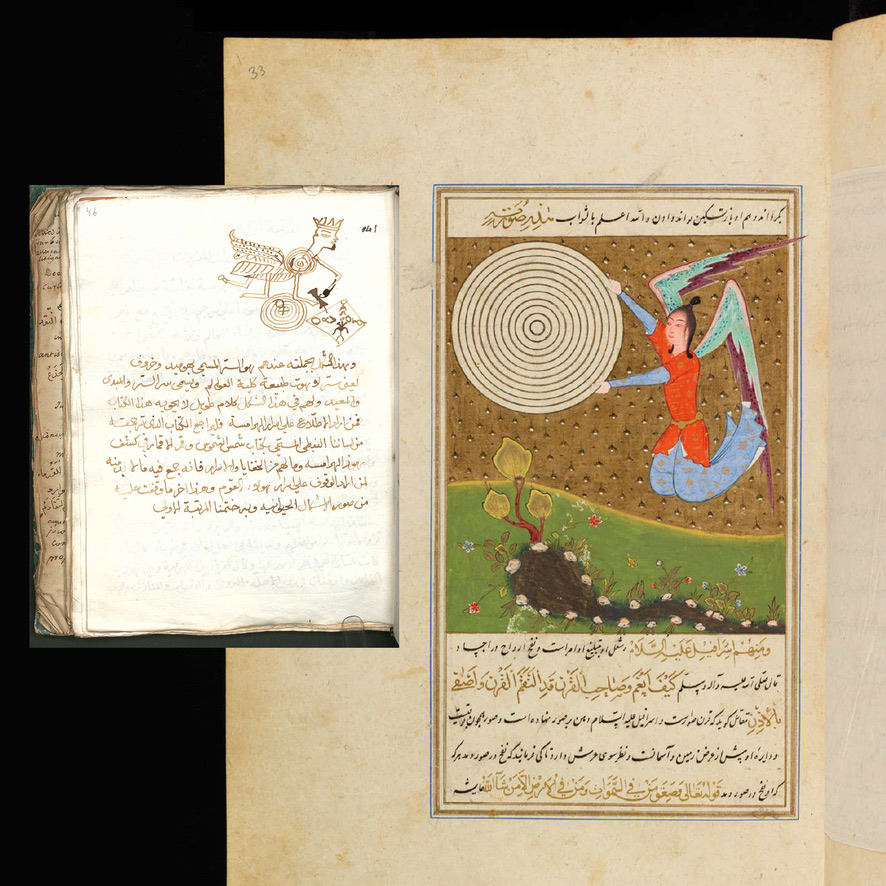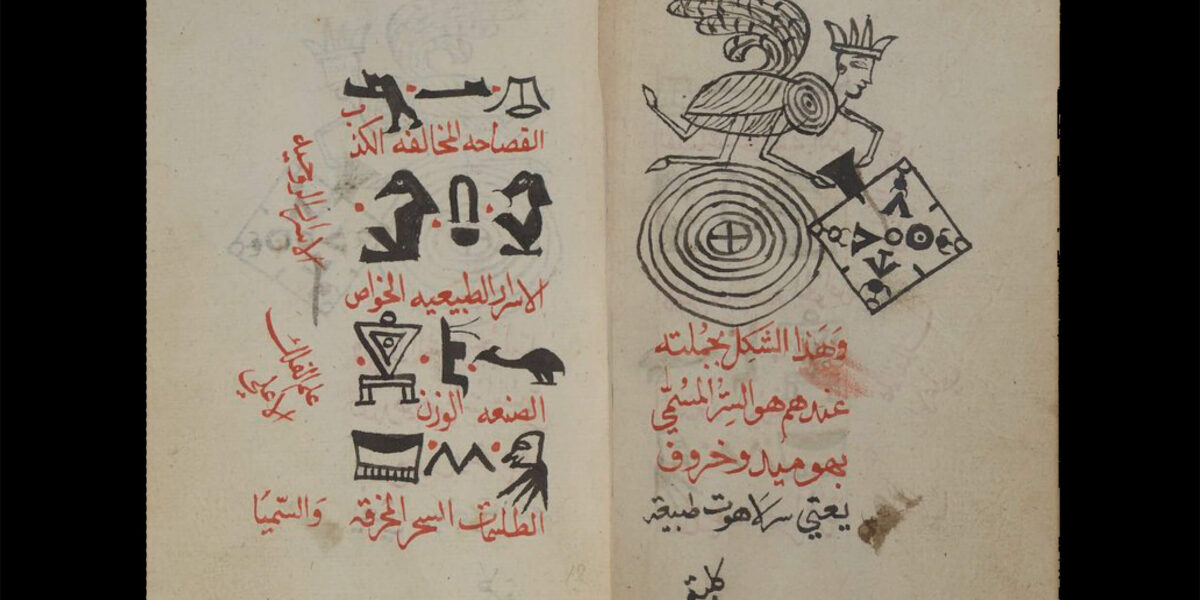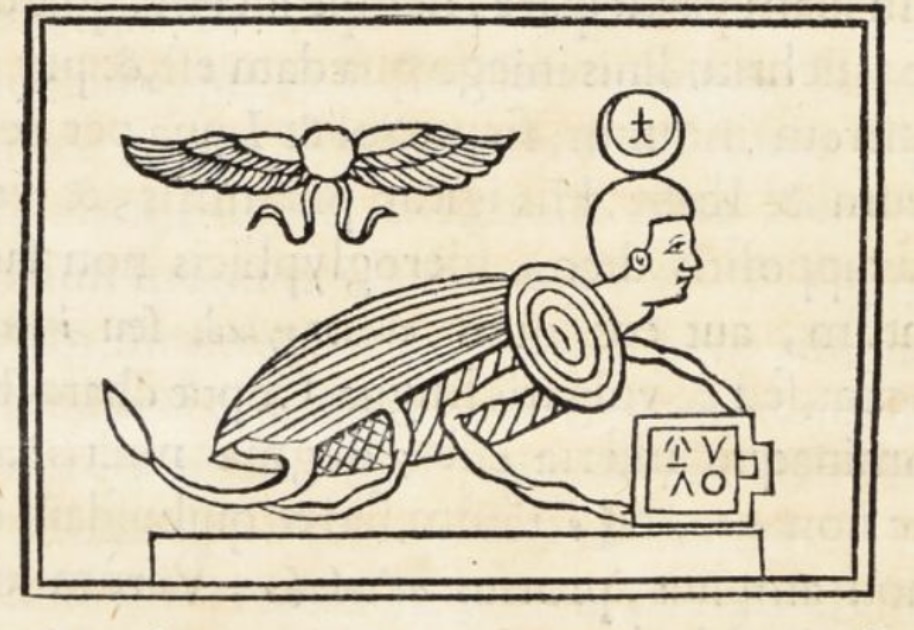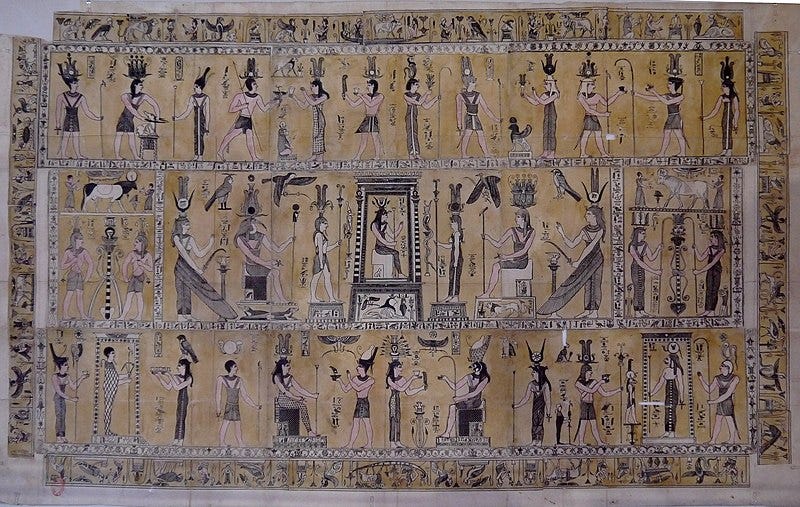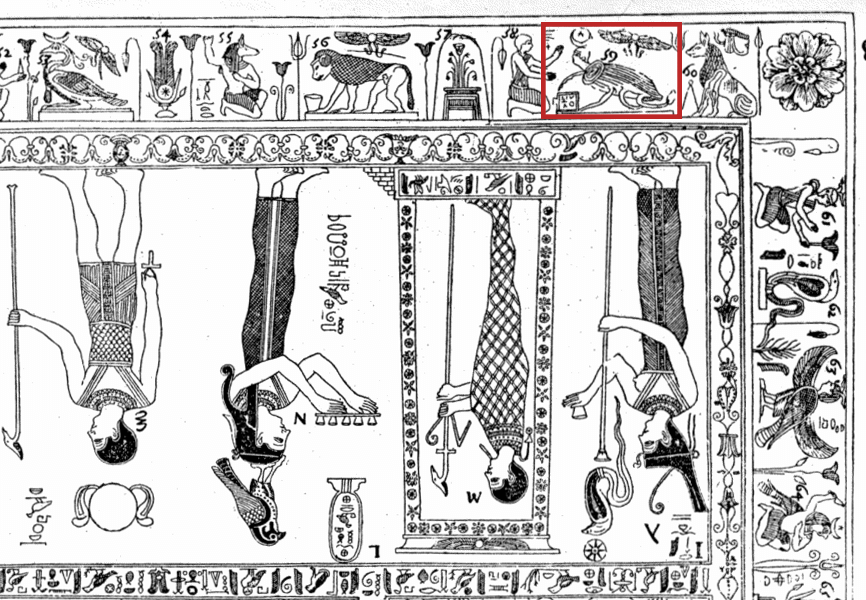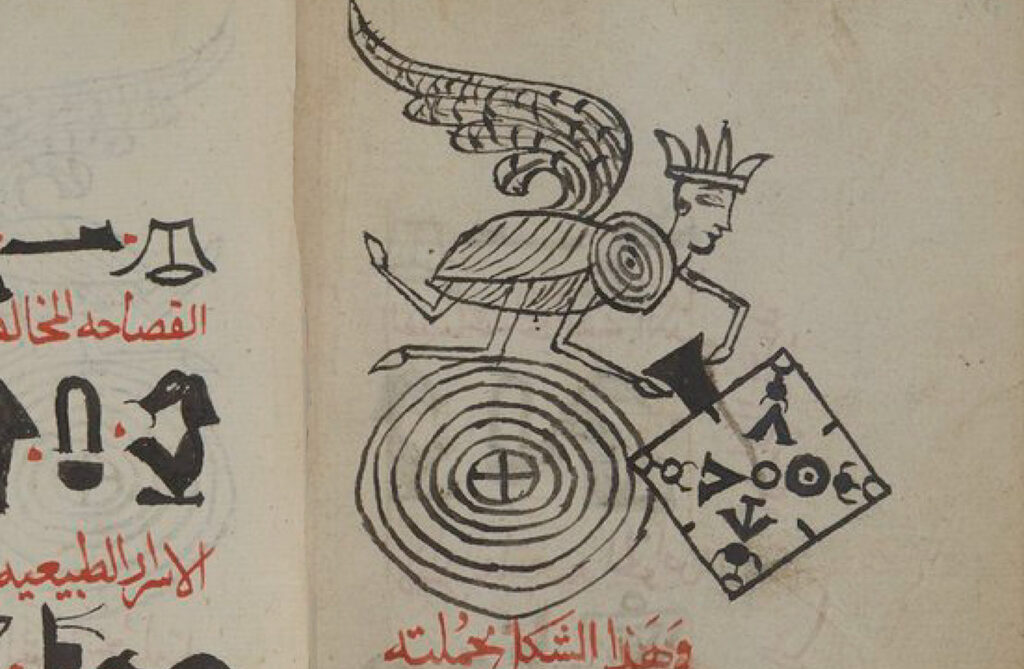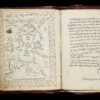The Long-Desired Fulfilled Knowledge of Occult Alphabets by Ibn Wahshiyya, 863 CE
Kitab Shauq Al-Mustaham fi Ma‘irfat Rumuz Al-Aqlam (The Long-Desired Fulfilled Knowledge of Occult Alphabets), also known in English as Ancient Alphabets, is a Hermetic discussion of the esoteric meaning of various Near Eastern scripts and ciphers, both real and fictitious. It is written, perhaps spuriously, by Ibn Wahshiyyah, also known as ʾAbū Bakr ʾAḥmad bin ʿAlī who flourished in the 9th/10th centuries. He wrote a number of books on Hermetic philosophy, toxicology, magic, and the occult. This includes the Nabatean Agriculture, which the author of Ghayat al-Hakim (Latin: Picatrix) openly drew from. He was the first historian to decipher ancient Egyptian hieroglyphs by relating them to the contemporary Coptic language. While some have argued that the text is a Renaissance forgery based on Prodromus Coptus by the 17th-century German Jesuit Athanasius Kircher’s , most scholars agree that it is a genuine 9th C Hermetic account. Al-Nadim discussed the book in his Al-Fihirst in 987 AD.
“…In this place we mention his books about the art of alchemy. They were: The Principles, a large book about the Art; The Principles, a small book about the Art; Gradation; Discourses, about the Art; a book comprising twenty sections, first, second, third, in sequence; a transcription of the alphabets with which the books on the Art and magic are written. Ibn Wahshiyah mentions these [alphabets], and I have read about them [in what was written] in his handwriting. I have also read a transcription of these same alphabets in a collection of passages written in the handwriting of Abu al-Hasan in al-Kuff […] These scripts frequently (sometimes) occurred in the books which I have mentioned about the Art, magic, and charms, in the languages with which people organized science, by Allāh, they cannot be understood unless a man knows the language, which is unusual…”
If it is an authentic work, Wahshiyyah had honed in on the same figure from the Bembine Tablet that Kircher discusses in detail hundreds of years before – this seems unlikely. Perhaps the figure was a later addition to the manuscript during the Renaissance or circulated independently of Bembine Tablet among the Sabians of Harran. The figure could have been copied to the Tablet from an earlier source. Its worth worth noting that Ibn Wahshiyya’s contributions were well known among Arab Egyptologists and, in Europe including Kircher, who built upon Ibn Wahshiyya’s findings. More research is required to understand the transmission of this mysterious figure however I will expound on its meaning later in our discussion.
According to Jaakko Hämeen-Anttila, Kitab Shauq Al-Mustaham may have been authored by Hasan ibn Faraj, an obscure descendant of the Harranian Sabian scholar Sinan ibn Thabit ibn Qurra (880–943) who claimed to have merely copied the work in the year 413 AH (1022 AD).
The book deals with 89 ancient languages and their writings and comparison in Arabic. Below is a list, in order of appearance, from the 1806 English translation of Joseph von Hammer-Purgstall’s edited by Jason Colavito:
- The Cufic alphabet
- The Maghrabin (western) or Andalusian alphabet.
- The Indian alphabet of three different sorts.
- The Syrian alphabet.
- The old Nabathean alphabet.
- The Hebrew alphabet.
- The Berrabian alphabet.
- The Lukumian alphabet.
- The Musnad or (Hamyaritic) alphabet.
- The Greek alphabet, commonly called the alphabet of the philosophers.
- The alphabet of Hermes.
- The alphabet of Cleomenes.
- The alphabet of Plato.
- The alphabet of Pythagoras.
- The alphabet of Scalinus.
- The alphabet of Socrates.
- . The alphabet of Aristotle.
- The alphabet of Bālīnus, the philosopher.
- Another Berrabian alphabet invented by the philosopher Sūrīd.
- The alphabet of the philosopher, Pherentius, who wrote therewith his philosophical books.
- The Moallak, or suspended alphabet, invented by Ptolemy the Greek.
- The Marbūt or connected alphabet, invented by Marconos? the philosopher. He wrote therewith books on talismans.
- The Giorgian alphabet, invented by philosopher Marjanos.
- The old Nabathean alphabet.
- The red alphabet, invented and used by the philosopher Magnis.
- The Talisman alphabet, invented by the Greek philosopher Ghāmīghāshīr?
- The mysterious alphabet, invented by Heliaosh? the Greek philosopher, who used it in his books.
- The alphabet of Costūdjis the Greek philosopher. He wrote in this alphabet, three hundred and sixty books on divinity, talismans, astrology, magic, influence of planets and fixed stars, and on the conjuration of spirits
- The alphabet of Hermes Abū Tat the philosopher. He wrote on the noble art (of philosophical secrets.) He constructed in upper Egypt treasure chambers, and set up stones containing magic inscriptions, which he locked, and guarded by the charm of this alphabet, extracted from the regions of darkness.
- The alphabet of Golphotorios the philosopher. He was deeply learned in the knowledge of spirits and cabalistic spells, in talismans, astrological aspects, and in the magic and black art. Philosophers and learned men have used this alphabet in their books and writings in preference to others, on account of its different extraordinary qualities.
- The alphabet of Syourianos the philosopher. He wrote in this alphabet on astronomy, and the secrets of the stars; on talismans, and their qualities; on magic alarm-posts; on the effects of planet-rings; and on the invocation and conjuration of spirits.
- The alphabet of Philaos the philosopher. He invented miraculous fumigations, marvellous compounds, talismans, and astrological tables. He constructed the treasure-chambers in the pyramids, and guarded them with the charm of wonderful alarm-posts.
- The alphabet of Dioscorides the philosopher, commonly called the Tree alphabet. He wrote on trees, shrubs, and herbs, and of their secret, useful, and noxious qualities in this alphabet, used since in their books by different philosophers.
- The Davidian alphabet. This alphabet was particularly used in India, and by many learned men in their writings on medicine, philosophy, and politics. It is one of the most celebrated alphabets.
- The alphabet of Democrates the philosopher. The Greek philosophers delighted very much in this alphabet, making use of it for the secrets and mysteries of their wisdom. They believed it to be the same with the Mercurial alphabet extracted from the regions of darkness.
- The alphabet of the Coptic Egyptian philosophers. In this they noted their calculations and indications, and wrote the inscriptions on their treasuries, and the secrets of divinity. Qophtrim, one of Noah’s descendants, invented this alphabet. It is even now used in calculation.
- The Farganian alphabet. It was invented by seven Roman philosophers, who wrote a great number of books on chemistry, magic, and medicine. Their principal was Diojānes, the great Roman king. This alphabet was much celebrated in his time, but is now forgotten.
- The alphabet of Zosimus, a Jew philosopher. This alphabet was very much refined by the Hebrew philosophers, who made use of it for writing their holy books deposited in Jerusalem.
- The alphabet of Marshol the philosopher. He was a wise and learned man, who wrote on different arts and sciences.
- The alphabet of Arcadjinis the Greek philosopher, (v. orig. p. 45.) He invented a great number of wonderful compounds, fumigations, royal theriacs, medicines, and effectual remedies.
- The alphabet of Plato the Greek philosopher. It is said that each letter of this alphabet had different imports, according to the affair and tiling treated of.
- The alphabet of Saturn.
- The alphabet of Jupiter.
- The alphabet of Mars, or philosopher Behram.
- The alphabet of the sun, the lord of heaven.
- The alphabet of Venus, Anaitis, the celestial dancer.
- The alphabet of Mercury or Hermes, the secretary of heaven.
- The alphabet of the moon.
- The alphabet of Aries, under the influence of Mars.
- The alphabet of Taurus, under the influence of Venus.
- The alphabet of the Gemini, under the influence of Mercury.
- The alphabet of Cancer, under the influence of the Moon.
- The alphabet of Leo, under the influence of the Sun.
- The alphabet of the Virgin, influenced by Mercury.
- The alphabet of Libra.
- The alphabet of Scorpio. This alphabet was very much used by the Chaldeans in their impressions on hidden treasures, and in their books and writings concerning the secret influence of the planet Mars. This alphabet was transmitted by spiritual inspiration through Marshimine to the soothsayer Arbiasios, the Nabathean.
- The alphabet of Sagittarius, influenced by Jupiter.
- The alphabet of Capricorn under the influence of Saturn. This alphabet was particularly appropriated to the use of the Babylonian and Persian philosophers, who kept it as a great secret. It was discovered after their extinction in their books, carried away by the Greeks. The Egyptian philosophers used it afterwards in their astronomical works.
- The alphabet of the sign Aquarius, under the influence of Saturn. It was particularly used by the Chaldeans and Sabeans in their incantation books, and also in their inscriptions relative to the science of spirits.
- The alphabet of Pisces.
- The alphabet of king Berdois the Syrian. In this alphabet he wrote all his books on the minutiae of divinity, and natural law.
- The alphabet of king Resiut, the Egyptian Pharaoh. He constructed wonderful talismans and magical alarm-posts. All of them in this ancient alphabet.
- The alphabet of king Kimas the Hermesian. He wrote two hundred books on astronomy, on the secrets of physic, and on the qualities of plants and minerals.
- The alphabet of king Mehrarish. He was a famous soothsayer, deeply experienced in philosophy and divinity. He wrote more than a thousand books on other sciences.
- The alphabet of king Taberinos the soothsayer. One of the alphabets used by the Pharaohs in their inscriptions.
- The alphabet of king Diosmos, the Egyptian. He was one of the Pharaohs most renowned for made, talismans, and astrological tables.
- The alphabet of king Berhemios the Egyptian. This is one of the oldest alphabets used by the magicians and Pharaohs in Egypt; and it was transferred from these to the soothsayers of India and China.
- The alphabet of king Ṣā, the soothsayer. He was one of the seven magicians, who were at the same time kings, doctors, soothsayers, magicians, and philosophers, who governed and cultivated Egypt, and built the great towns subsisting till this day.
- The alphabet of king Belbeis. He built a town four farsangs long, full of admirable works, and wrote a great number of books in this alphabet.
- The alphabet of king Qophtrim, the Egyptian. He was a great master in the art of constructing talismans and admirable alarm-posts, treasure spells, and wonderful images. He wrote an Encyclopedia of all sciences in tin’s alphabet.
- The Alphabets called Hermesian, viz. of the Disciples of Hermes, or the first dynasty of the Kings in Egypt, as we find them in the Writings of the Ancients.
- Hieroglyphics to express Words relative to Animal Actions and Affections.
- Hieroglyphics significant of Words relating to Trees and Plants, and their Produce.
- Hieroglyphics expressive of Words and Ideas belonging to Minerals.
- Antediluvian Alphabets preserved by the Nabateans, Chaldeans, and Sabeans.
- Shīshīm alphabet, was used for writing sentences of wisdom on clay, which being burnt became pottery.
- The Alphabet of the Pharaohs. They firmly believed in its antiquity, and the Nabatheans and Chaldeans continued in the same opinion.
- The oldest Chaldean alphabet.
- Another Chaldean alphabet.
- Another old unknown alphabet.
In the section on “Hieroglyphics used to express Words relative to Animal Actions and Affections”, Wahshiyya includes a mysterious figure which he briefly explains.
“It is expressive of the most sublime secret, called originally Bahumed and Kharuj (or calf), viz. The Secret of the nature of the worlds or The Secret of Secrets, or The Beginning and Return of every thing. To speak at length of this figure, is more than the limits of this book allow. We refer the curious, who wish for more explanation, to a book, which we have translated from our Nabathean language into Arabic, and entitled: Sun of Suns and Moon of Moons, illuminating the discovery of the Hermesian alphabets, or hieroglyphics, where he will be completely satisfied.”
To my knowledge, this text remains undiscovered and Wahshiyya doesn’t explain what it means. To the contrary, Athanasius Kircher discusses it at great length in his 1636 work, Prodromus Coptus (The Coptic or Egyptian Forerunner). The figure derives from The Bembine Tablet, or the Mensa Isiaca (Isiac Tablet), an elaborate tablet of bronze with enamel and silver inlay. The Tablet is now regarded as of Roman rather than Egyptian origin, dating to some time in the 1st century CE.
Apparently, the winged figure is holding a tablet inscribed with Coptic Egyptian characters representative of the four elements which Kircher associates with unity of all things. In essence, the drawing represents the connection between the macrocosm and microcosm. According to Kircher, it depicts a scarab beetle with the head of Horus; the sublunary daemons who traffic between the high and the low. This would explain why the figure was sacred or representative of the beliefs of the Harranin Sabians (al-sabi’a), an astral cult who preserved the ancient practices of Mesopotamians. They believed that all events in the terrestrial realm were produced by the configuration of the planets and that each planet and celestial sphere was animated by Ruhaniyat (celestial spirits or souls). The power of the spirits could be harnessed to impact change in the sublunary realm through ritual; to obtain power over the sublunary world. By the power of his own soul, like the celestial souls, he would transcend his humanity and command movement of the heavenly spheres. Al-Razi discusses in detail how one can, like the Sabians, achieve perfection of the soul through these rituals.
This idea is richly illuminated in this 16th C Persian version of Qazwini’s ʻAjāʼib al-makhlūqāt wa-gharāʼib al-mawjūdāt (“The marvels of creation and the oddities of existence”) commonly known as “The cosmography of Qazwini” [Cambridge MS Nn.3.74 ff. 33r]
In the heavens, the angel Israfil holds a sacred figure; a mandala-like representation of planetary spheres that when drawn in its likeness on earth causes an awakening in the spirit world. The two mandalas subjoin and like a reflection of one another create a gateway between worlds and through it, the angels may descend.
